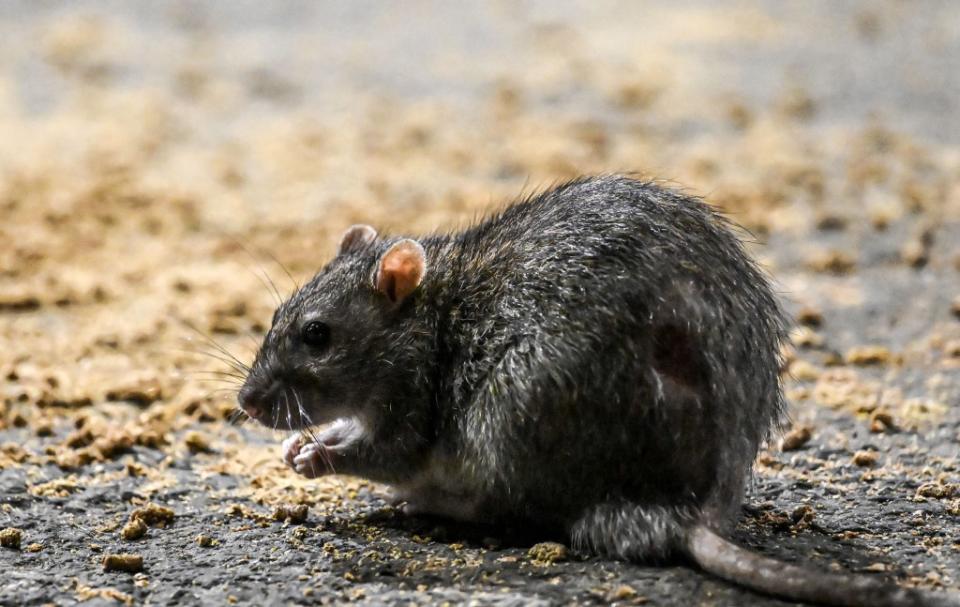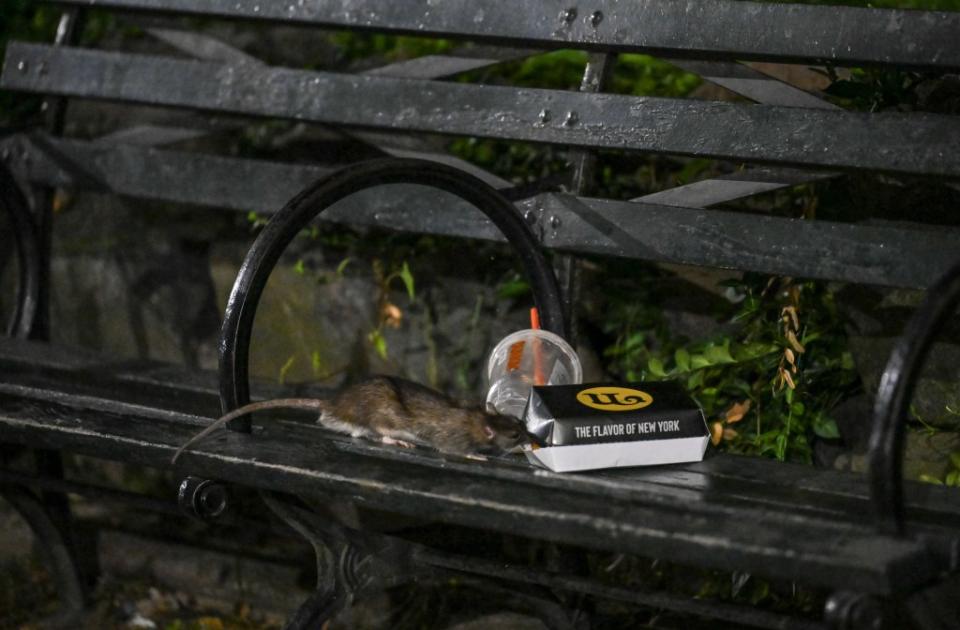Cases of disease caused by rat urine are rising — how to stay safe

Watch out for this rat pack.
Leptospirosis cases are on the rise, and after a health advisory was issued last week, New Yorkers are on high alert for the frightening disease that’s carried in rat urine.
While a few cases each year are nothing to squeak about, 24 cases were reported in 2023 — the highest yet. And this year, six cases have already been identified, with that number expected to rise.
That’s a leap from 2021, when the New York City Department of Health and Mental Hygiene issued a previous advisory. That year, at least 14 people became infected with the serious disease and 13 of those cases ended up in the hospital. One person died. In 2017, there were also two reported cases and one death from the once-rare infection.
So what are straphangers to do when they see a furry foe? Here are the signs and symptoms you should watch for, plus how to keep your city dogs safe.
What is leptospirosis?
Leptospirosis is a bacterial disease caused by the bacteria Leptospira. It can survive for months in the soil and water. In addition to being carried in rat urine, it’s also found in the urine of other animals, including pigs, cattle, horses, dogs and other wild animals. Infected animals may not show any symptoms that they’re carrying the bacteria, according to the Centers for Disease Control and Prevention.
People get infected when they come into contact with the bacteria through touching contaminated soil or water and the bacteria enters through the eyes, ears, mouth or a cut or scratch in the skin. It’s rarely spread person to person — so cases typically remain isolated.

The infected New Yorkers had a history of exposure to rat urine (handling trash bags, for example) or were frequently in environments where the bacteria could be found — like coming into contact with soil or contaminated water, according to the health advisory.
Between 2021 and 2023, most of the cases occurred in The Bronx (37), followed by Manhattan with 28 cases, Brooklyn with 19 cases, and Queens with 10 cases.
What are the symptoms of leptospirosis?

This is one illness you don’t want to take your chances with. Although symptoms vary, if left untreated, people can face kidney failure, meningitis or liver damage, the advisory notes.
Early signs and symptoms might just feel like a bad cold — a high fever, headache, chills, muscle aches, diarrhea, and rash can all be common. Head to your doc and you’ll likely get an antibiotic prescription to treat the infection.
The illness can last anywhere from a few days to several weeks, according to the CDC.
How to prevent leptospirosis
There are lots of ways you can cut down on your risk of exposure — and it doesn’t mean you have to stop riding the subway.
Simple tips, like washing your hands regularly and covering any open cuts or wounds will help significantly. Always wear shoes when you take the trash out (and take those shoes off when you get inside), and you can also wear gloves (that you then remove immediately coming back into your house), as well.
If you can’t avoid areas where rats have been because of your job, the NYC Department of Health also advises cleaning surfaces and floors with watered down bleach (one part bleach, 10 parts water), which will kill the bacteria.
Can dogs get leptospirosis?

Unfortunately, man’s best friend is not immune. In 2021, one New Yorker lost her cuddly 10-pound Australian cattle dog to the terrible disease. Because the bacteria can linger in pools of water and soil for months — vulnerable animals, like puppies, who like splashing around in NYC puddles, can be just as susceptible as humans. The owner of the dog who died said at the time that she didn’t know where her dog picked up the bacteria.
The disease ravages dogs, livestock, certain wildlife, and in rarer cases, cats too, according to the American Veterinary Medical Association. When caught early enough, recovery chances are strong, although there might still be a chance of liver or kidney damage.
The good news is that vaccines are available to protect your dog — and vets recommend that all dogs get vaccinated. You can also reduce your dog’s risk of exposure by keeping them out of muddy puddles, and obviously, keeping them away from any stray rats you spot during your nightly walks.

